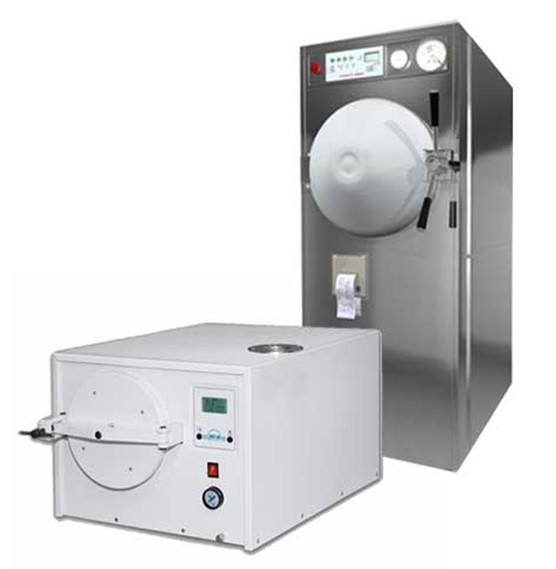Three main questions about the possibility of conception or where to start?

Oleg Leonidovich Tishkevich, Deputy General DIRECTOR for Medical Activities of the Embryo Clinic, Chief Physician, Obstetrician-Gynecologist, Reproductologist, tells about this problem, diagnostics and solutions.
What does it take to get pregnant?Spermatozoa, uterus, fallopian tubes, ovaries are the main "participants". Violation in any of them can lead to infertility. If sperm parameters are violated, it means that spermatozoa may not reach; if they run, but they are weak, they may not have enough energy, speed to fertilize the egg. Due to some pathology in the HEAD of the sperm, there may not be contact with the egg. The uterus is the place where pregnancy will develop. There must be ideal conditions for the implantation of the embryo. If there is some kind of pathology in the uterus, this will be an obstacle to the formation and attachment of the fetal egg. And, of course, spermatozoa should easily penetrate through the cervical canal.
The fallopian tubes must be freely passable, without pathological processes in them.
The ovaries must work to produce eggs. The egg must be released freely from the ovary, and for this, ovulation must occur.
Diagnostic search for infertility is moving in these directions.During this search, we must answer several questions:
- Are there spermatozoa and how do they move?
- Is there a uterus and are the fallopian tubes passable?
- Does ovulation occur and does the egg mature?
These three questions are the basis for any survey.
It is easiest for a man to undergo an examination, and in an hour you can know his potential.
It is more difficult for a woman, she needs to pass more tests and undergo research.
The very first is to evaluate ovarian function. It is painless, non-traumatic. Almost every DOCTOR has ultrasound machines today. It is with the help of ultrasound that one can assess the structure of the ovaries, the structure of the uterus, see if there are any pathological formations, and understand whether the ovaries and uterus work synchronously. Normally, in the female body, the work of the uterus and ovaries is regulated hormonally.
When menstruation begins, the endometrium of the last cycle is torn off from the uterine wall and comes out with blood. The first phase of the cycle coincides with the maturation of the egg. In the middle of the cycle, approximately on the 13-14th day, the egg leaves the follicle, the follicle becomes thinner by this point, because there are hormonal peaks that promote ovulation. The same luteinizing hormone (LH) provokes ovulation. The follicle bursts, the egg leaves it and must enter the tube that hangs over the ovary. And at the same moment, a spermatozoon has already run into the fallopian tube. This is a very delicate mechanism. And if they met - hurray! Love! The result was an embryo, which, moving along the tube, simultaneously divides and develops. These metamorphoses cannot be seen on any equipment, and they take only a few hours and days.
On the 5-6th day after fertilization, the embryo enters the uterus. And here, already against the background of hormones that are produced in the ovaries (female sex hormones estradiol, progesterone), the endometrium is transformed into that phase (structure) that is favorable for conception.
What does the endometrium look like?In fact, this is such a "washcloth" or "terry towel", plastered on the outside with small protrusions - pinopodiums.
They are hormone-dependent and play a major role in contact with the embryo, which simply sticks to them. Sometimes women ask after the transfer of the embryo into the uterus during IVF: "Doctor, won't it fall out?"
Even if a woman jumps, nothing will happen to the embryo. This one is like a drop of water on a towel.
Then there are quite complex hormonal, biochemical processes in the uterus. The embryo develops, grows, the placenta and the fetal sac are formed. And after two weeks, according to the analysis, you can see whether pregnancy has occurred or not. If it has come, the hormonal plateau will turn into pregnancy. If there is no pregnancy, a drop in hormones causes rejection of the endometrium and a new menstruation. This is a really complex system, the slightest failure in which can break it.
The main factors that increase and, accordingly, reduce the chances of getting pregnant for women and for men.
What factors for women increase the likelihood of conception?- The younger the woman, the better. Those who are younger than 30 have the highest chances.
- If you have already had pregnancies, the chances increase.
- If she is sexually active within 6 days before ovulation.
- A woman's body mass index is between 20 and 30.
- Partners do not smoke.
- Do not abuse coffee, ALCOHOL.
What factors reduce the chances of conceiving a child for a woman?- A woman over 35 years old.
- If there was no pregnancy before.
- If there is no pregnancy within three years.
- When spouses live at a distance and there is no regular sexual life.
- Smoking, more than three cups of coffee a day, alcohol .
- Insufficient body weight in a woman.
- Excessive physical activity.
Factors affecting a man's ability to conceive:- sexually transmitted infections; urinary tract infections;
- diseases that cause damage to the testicles - mumps;
- testicular injury;
- varicocele - expansion of the veins of the spermatic cord. Why it occurs is unclear;
- cryptorchidism - undescended testicles on time. When a boy is born, his testicles are in his abdomen or in the inguinal canal. If they remain there, the testicles overheat and during puberty the spermatozoa burn out. Therefore, an examination by a urologist in early childhood is mandatory, and there is no need to be ashamed of it;
- systemic diseases - diabetes mellitus, tuberculosis, diseases of the lungs, liver, pancreas, kidney failure, obesity, ALCOHOLISM;
- erectile disfunction;
- abnormal development of the genital organs;
- increase in body temperature - lovers of the bath are at great risk. I explain to the men at the reception simply: take a chicken egg, take it to the steam room and forget it for half an hour. And then break it and look: not hard-boiled, but it will definitely be soft-boiled - the protein will curl up and turn white. Sperm is the same protein. The spermatogenic epithelium is a protein. Protein denaturation occurs, tubules become clogged, sperm dies. Therefore, the bath "is not good" for men;
- some drugs - certain antibiotics, chemotherapy drugs for oncological diseases (therefore, very often such patients donate sperm before starting therapy), anabolic steroids; drugs prescribed for the treatment of gastritis, stomach ulcers, hypertension;
- genetic factors - for example, cystic fibrosis, which can lead to congenital absence of the vas deferens; incorrect arrangement of chromosomes;
- environmental factors - pesticides, chemicals, epoxy resins. No wonder rich companies place production in third world countries.
Where to begin?The examination begins with the search for answers to the very simple three questions: is sperm normal, is the woman ovulating, and are the tubes passable. We start with men and sperm counts. The problem of reducing the quantity and quality of spermatozoa exists all over the world. In the Soviet Union, the concentration of 60 million spermatozoa per milliliter of semen was considered the norm. Then the World HEALTH Organization considered that 20 million spermatozoa per milliliter were enough. According to the latest WHO data, already 15 million spermatozoa turn out to be normal. These figures are obtained as a result of large studies on hundreds of thousands of men who have children, that is, fertile, in different countries and on different continents. Their sperm counts were checked and parameters calculated. Another indicator of sperm is sperm motility. Her rate is also getting lower. Was 50%, now 32%. What do these numbers say? Human nature is very flexible. We do not know where the border is when a person cannot have children at all, and where else he can. We, as infertility specialists, may or may not be satisfied with accepted norms. But one thing is clear: the higher the sperm parameters, the better. You can't rely on the fact that I have 15 million sperm, so I'm a hero. No, let it be better if you have 20 million, or better - 40 million. Although there is a chance with 15 million. that I have 15 million sperm, so I'm a hero. No, let it be better if you have 20 million, or better - 40 million. Although there is a chance with 15 million. that I have 15 million sperm, so I'm a hero. No, let it be better if you have 20 million, or better - 40 million. Although there is a chance with 15 million.
There are classifications for determining male fertility.
Normospermia - normal spermogram and all its values.
Oligozoospermia - the concentration of spermatozoa is below normal.
Asthenozoospermia - sperm motility is below normal.
Teratozoospemia - the morphology of spermatozoa is below normal.
Oligoastenoteratozoospermia - a decrease in all three indicators.
Azoospermia - no sperm
Aspermia - no ejaculate at all.
There are diseases in which spermatozoa are not produced at all. Then we conduct a survey, which should show why they are not there: they are not produced or are produced, but there is no way out for them. Special tests are taken, a man is checked for genetics, an ultrasound is done, and we see, let's say that there is a chance. Then you can do a biopsy and get a sperm cell either from the epididymis or from the testicle itself. Thus, we can give a chance to become a father to a man who has no sperm at all.
And by the way, the cause of his problem may not be congenital at all. As a child, they could hit him in the groin with a ball, the guy was swollen there, but he was ashamed to tell mom and dad, it hurt, after a month or two it passed. And the blockage of the tubules remained.
Read together with it:
- В Минтруда напомнили об основных мерах безопасности во время проведения республиканского субботникаНовости темы 25 октября, Минск. Как обеспечить безопасность проведения республиканского субботника, рассказали БЕЛТА в Министерстве труда и социальной защиты. Сегодня республиканский субботник объединит сотни тысяч белорусов. В ведомстве напомнили об основных мерах безопасности во время его проведения. Если во время субботника сотрудники находятся на своем рабочем месте, обеспечение здоровых и без...
- He took her pension and fed her once every two or three days. In Vitebsk, a son drove his disabled mother to exhaustion.October 24, MINSK . The Vitebsk prosecutor opened a criminal case for abandonment in danger in defense of the rights and legitimate interests of a 61-year-old local woman, a third-degree disabled person whose son had driven her to exhaustion, BelTA reports, citing the information service of the Vitebsk Regional Prosecutor's Office. According to the case file, the 61-year-old woman was unable to mo...
- Производство яиц растёт в Липецкой областиЗа девять месяцев 2025 года в хозяйствах всех категорий региона получено 702,4 млн яиц. Это на 8 % больше, чем за аналогичный период прошлого года. Основным производителем и поставщиком пищевого куриного яйца в Липецкой области является сельхозпредприятие, две площадки которого расположены в Липецком округе и Грязинском районе. В день там получают порядка 1,6 млн штук яиц. За три квартала текущего...
- Increasing egg production of laying hens in Kabardino-Balkaria: successes and prospectsThe increase in chicken population has been a key factor in this growth. Currently, the total number of laying hens in the republic has reached 2.3 million, a 14% increase over last year. This demonstrates that local farmers are actively expanding their farms by implementing modern technologies and poultry care methods. The main reasons for increased egg production include: Improved feeding: Farme...
- Indonesia: New rules to protect farm animalsKey Provisions of the New Regulation The new draft law , currently being reviewed, sets ambitious goals. it will cover all categories of animals—from farm animals to pets, service animals, and laboratory animals. The primary focus is on implementing a certification system for farmers who are committed to more humane and sustainable farming practices. This will not only improve animal welfare but a...
- Yle has learned of the possible closure of a Finnish airport popular with Russians.Lappeenranta Airport, Finland Lappeenranta Airport inFinland may close due to losses, according to Finnish broadcaster Yle. Among its clients were tourists from RUSSIA, whose numbers have declined sharply since 2014. According to the television company's data, the airport's operations may be suspended due to EU policy, which stipulates that unprofitable airports should not be supported by public f...
- This swimming season, 44 fishermen have drowned in Belarus, 25 of whom were drunk.October 22, MINSK . During the OSVOD Republican Council meeting to summarize the 2025 swimming season, Andrei Chernyavsky, Chairman of the OSVOD Republican Council, discussed who is most at risk of drowning, BelTA reports.More than half of the deaths in water are caused by swimming in a state ofAlcohol intoxication . Tragic incidents often occur in areas not equipped for swimming. People also die ...




























































